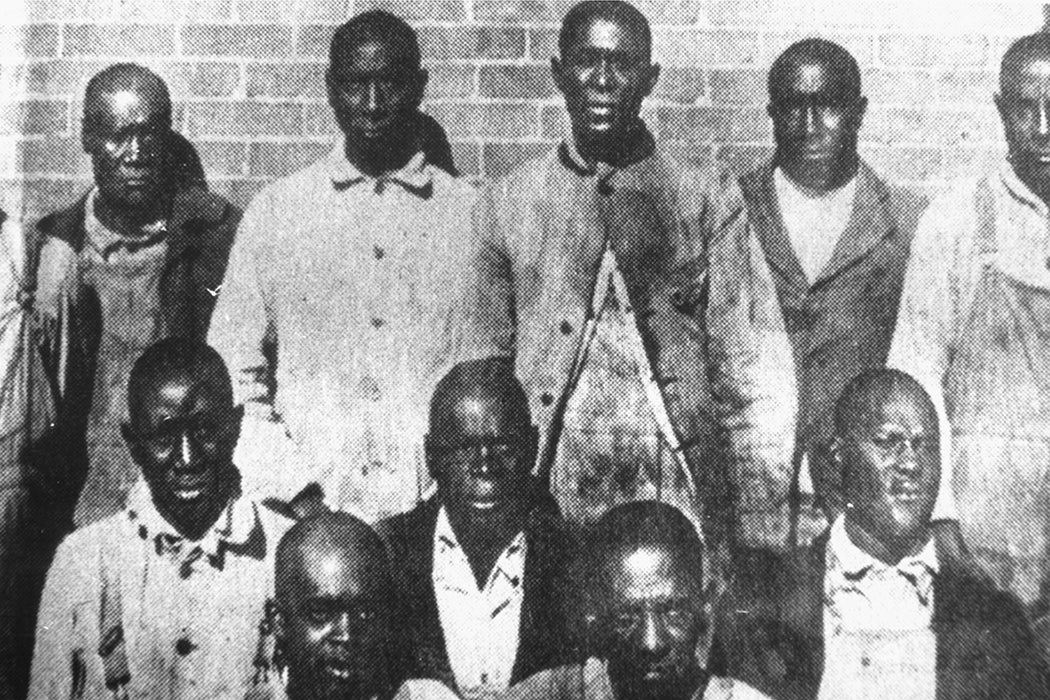One hundred years ago, the U.S. entered World War I. Two years after that, in Elaine, Arkansas, armed posses and federal troops killed as many as one hundred African-Americans and jailed hundreds more in one of the worst instances of mass violence in U.S. history.
Kieran Taylor traces the rapid changes in the nation that connected these two events. Taylor begins his story in 1916 when author Richard Wright, then an eight-year-old boy, had just moved to Elaine with his family. Wright’s uncle, Silas Hoskins, operated a successful tavern in town, catering to black sawmill workers. That winter, white businessmen demanded that Hoskins sell them the tavern. When he refused, they murdered him. Wright’s mother and sister, knowing their lives were in danger, fled town.
“Why had we not fought back, I asked my mother, and the fear that was in her made her slap me into silence,” Wright later wrote.
But over the next three years, Elaine’s African-Americans gained more leverage to fight back. The war drew many sharecroppers away from the South, to enlist or to work in the nation’s booming industrial centers. The ensuing labor shortage left those who stayed in a better bargaining position. Meanwhile, the war drove up the price of cotton, making it easy for planters to raise pay. Some former sharecroppers used the money to buy their own farms—black farm ownership rose 40 percent in Phillips County between 1910 and 1920.
Taylor writes that the independent black farmers helped catalyze new autonomous organizations like the Progressive Farmers and Household Union, which organized chapters of black workers in communities around the county. Returning black troops, having experienced life with less discrimination while serving in Europe, joined in the organizing efforts.
Black organizing efforts in the county were part of a much larger movement happening across the nation. In 1919, one in five American workers went on strike at some point, including many majority-black or multiracial unions.
But Phillips County’s white upper class was organizing too. Early in 1919, hundreds of prominent businessmen and planters cooperated in reducing cotton acreage, seeking to drive up prices. By harvest time, black organizing threatened their expected profit margins, so planters delayed payment to their workers or lowballed rates.
The strength of the Progressive Farmers and Household Union shocked them.
“As they were unaccustomed to organized challenges to paternalism, whites were caught sorely off-guard by the union as rural black preachers, women, and senior citizens joined the young black men who made up the group’s core,” Taylor writes.
Weekly Digest
When members of the group fought back against white vigilantes, the white establishment responded with massive, horrific violence, similar to massacres of black people that happened across the country around that time, including the 1921 attack on Black Wall Street in Tulsa. It was the reaction of a white power structure faced with a powerful challenge to its control of black workers that emerged after the war and would continue in the decades to come.








[…] The long “Red Summer of 1919” saw a brutal outburst of mob violence directed against African Americans across the country. James Weldon Johnson, field secretary of the NAACP, was the one to name it the “Red Summer.” This “red” was for blood. Among other horrors, there were race riots, ninety-seven lynchings, and a pogrom-like massacre of somewhere between 100 and 237 people in Elaine, Arkansas. […]